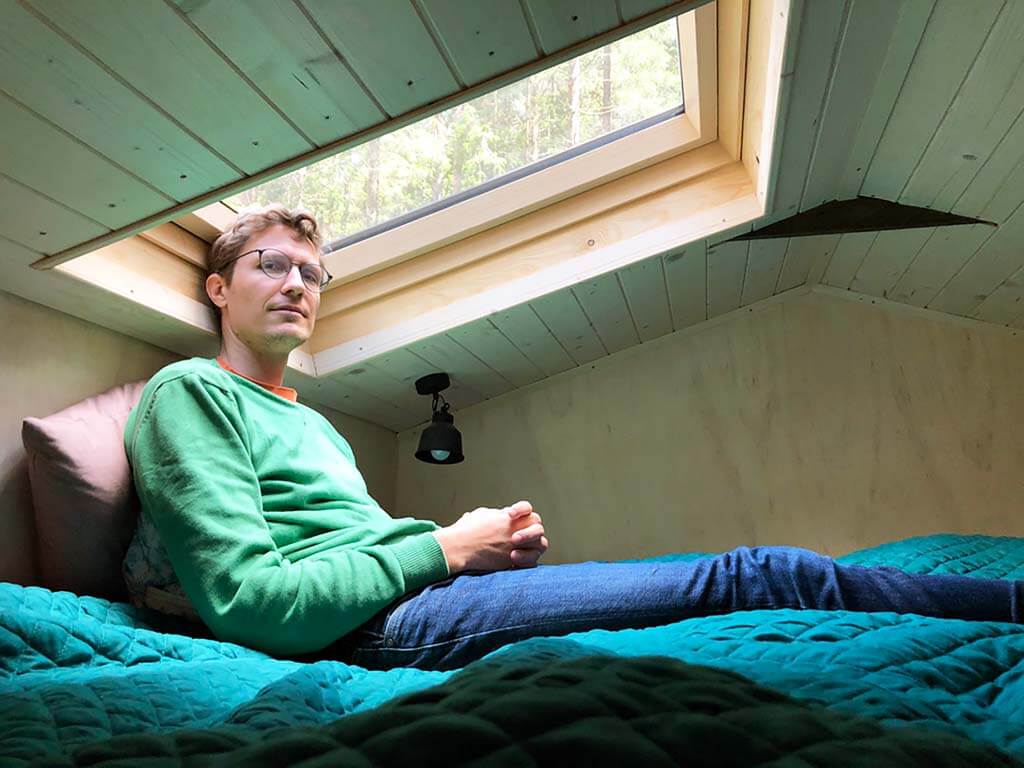
Can you *actually* fit into a tiny house?
A tiny house is not everybody’s piece of cake and requires downsizing. But can you *actually* squeeze your belongings (and yourself) to fit in it?

The internet is full of beautiful pictures, walk-throughs and presentations of tiny houses. An abundance of such resources helps getting inspired, plan the looks and features. Unfortunately, when it comes to construction, such beauty shots are little help for inexperienced builders.
Planning and building Datscha, we have been struggling with some questions regarding the construction and technical solutions and desperately looking for in-depth resources explaining all the steps slowly and thoroughly. Discovering Tiny Nest YouTube Channel was a revelation.
Below you will find a selection of, in my opinion, their best tips and tricks.

The thing I love about Tiny Nest is the detailed SketchUp 3D model. They referenced it directly while building and updated throughout the project to reflect the build that took place, actual status quo of the house. Most of the projects I have seen before were fragmentary, reflecting only a part of the process or discussing the features superficially.
Jake and Kiva provide their 3D model as a tool for learning and inspiration, not certified building plans, directly on their website. „We used the 3D modelling software SketchUp to plan every inch of the structure (…) we also provide our SketchUp Project File on its own, by donation.“ – they write.
Tiny Nest Ressources made me realize that there is no point in starting the build before completing such a model. To purchase the proper materials at a fair cost and plan the work, a 3D model and a project are necessary.
The conventional method uses two furring strips installed perpendicular to one another on the shedding. They provide airflow underneath the cladding for cooling down or warming up the house. The higher the furring strips are, the better the air can circulate. Unfortunately, the allowed width of the tiny house does not allow high furring strips. Most of the DIY builders does not bother about ventilating the walls at all. A great solution is plastic ventilated furring strips presented by Tiny Nest. We did not use them in the end, as the import from America to Europe would have taken too much time but judging from the video – they are great!

Jakob used the same technique with a metal wire as Jake while installing the insulation on our roof. If it is not patented yet, it should be. It saved us tons of time and effort. See the details in the video below.
Another small but important feature. By installing the furring strips and allowing the walls to ventilate, you also potentially invite bugs in. We didn’t want to discover a nest of ants impossible to remove. Therefore we also installed bug screens in our walls, as Jake suggested. Below you can see his video and a picture of me installing a DIY bug screen underneath our cladding.

For us, that’s a biggie! Building Datscha took us a year instead of the planned three months. For a perfectionist like Anna, minor setbacks like that become huge problems. When our friends asked, „When the tiny house be complete?“ in her head, it sounded like: „WHY is it not finished yet??!“ When you think about this, it is only natural that a medical doctor and a designer need a long time to finish building a house.
That is why we admire Tiny Nest so much. Not only had they created a complete building series and prepared professional plans, which both took a lot of effort and a massive amount of time. But also, they stayed positive and motivated through the process and finished the house as planned. They make lemonade out of the lemons the life gives them, they say themselves in their recent update about insurance problems. Knowing that also experienced, well-prepared builders also encounter problems is somehow soothing. It proves that it happens to everybody in the tiny community, even the best ones. Jake and Kiva – thank you for this lesson!

A tiny house is not everybody’s piece of cake and requires downsizing. But can you *actually* squeeze your belongings (and yourself) to fit in it?

In theory, it is easy: you tow it the same way as any other type of trailer. Here is a list of 5 things to consider before you hit the road (European edition).

It is a short update about losing a perfect parking opportunity. We are not successful in finding the next equally suitable one and require your help!